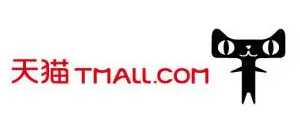Application of konjac food
Release time:
2024-01-05
Konjac has been identified by the United Nations Health Organization as one of the top ten health foods. The former Ministry of Health of China also listed new food resources such as konjac (konjac) as common food raw materials in document No. 17 of 2004. Amorphophallus (konjac) tuber starch content is less, the main component is konjac glucomannan (konjac mannan), in the intestinal tract is almost not digested, but also can promote intestinal peristalsis, based on various excellent characteristics, konjac purified to fine powder, fine powder, purified powder, can be used as industrial raw materials, used in food, medicine, cosmetics and other fields. In Japanese cuisine, konjac (konnyaku) appears in dishes such as Kanto Boiled. It is usually mottled gray and harder than most gelatins. It has little taste; the common variety tastes a bit like salt, often with a faint taste and smell of the sea. Its texture is more valuable than its taste. Ito konjac (konjac) is a Japanese food consisting of konjac cut into noodles. It is usually sold in a plastic bag with water attached. It is often used for sukiyaki and kwantung cooking. Japanese konjac is made by mixing konjac flour with water and lime water. Sargassum is often added because it has a characteristic dark color and flavor. Without color additives, konjac is white. It is then boiled and cooled to solidify. The konjac made in the form of noodles is called shirataki and is used for foods such as sukiyaki and beef-covered rice. Konjac is consumed in parts of China's Sichuan province; the bulb is called konjac, and the jelly is called konjac tofu or konjac. In Vietnam, konjac is mainly grown in An Giang province. Collect the bulbs and process them into flour. Flour is used to make drinks, cakes and noodles. traditional medicine The dried corms of the konjac plant contain about 40% glucomannan gum. This polysaccharide makes konjac gum a sticky substance that can be used in traditional Chinese medicine. Jelly Konjac can also be made into a popular East Asian jelly snack, known in the United States as a lychee cup (typical of flavor and coconut cubes suspended in a gel) or konjac sugar, usually in a bite-sized plastic cup.
Konjac has been identified by the United Nations Health Organization as one of the top ten health foods. The former Ministry of Health of China also listed new food resources such as konjac (konjac) as common food raw materials in document No. 17 of 2004. Amorphophallus (konjac) tuber starch content is less, the main component is konjac glucomannan (konjac mannan), in the intestinal tract is almost not digested, but also can promote intestinal peristalsis, based on various excellent characteristics, konjac purified to fine powder, fine powder, purified powder, can be used as industrial raw materials, used in food, medicine, cosmetics and other fields.
In Japanese cuisine, konjac (konnyaku) appears in dishes such as Kanto Boiled. It is usually mottled gray and harder than most gelatins. It has little taste; the common variety tastes a bit like salt, often with a faint taste and smell of the sea. Its texture is more valuable than its taste.
Ito konjac (konjac) is a Japanese food consisting of konjac cut into noodles. It is usually sold in a plastic bag with water attached. It is often used for sukiyaki and kwantung cooking.
Japanese konjac is made by mixing konjac flour with water and lime water. Sargassum is often added because it has a characteristic dark color and flavor. Without color additives, konjac is white. It is then boiled and cooled to solidify. The konjac made in the form of noodles is called shirataki and is used for foods such as sukiyaki and beef-covered rice.
Konjac is consumed in parts of China's Sichuan province; the bulb is called konjac, and the jelly is called konjac tofu or konjac.
In Vietnam, konjac is mainly grown in An Giang province. Collect the bulbs and process them into flour. Flour is used to make drinks, cakes and noodles.
traditional medicine
The dried corms of the konjac plant contain about 40% glucomannan gum. This polysaccharide makes konjac gum a sticky substance that can be used in traditional Chinese medicine.
Jelly
Konjac can also be made into a popular East Asian jelly snack, known in the United States as a lychee cup (typical of flavor and coconut cubes suspended in a gel) or konjac sugar, usually in a bite-sized plastic cup.
Previous
Next
Previous:
Next:
RELATED INFORMATION

QR code

Red Book

Address: Annan Avenue Industrial Zone, Chaoan District, Chaozhou City, Guangdong Province
Powered by www.300.cn | SEO










